What Are Espresso Puck Screens and Do You Really Need One?
I’ve been pulling espresso shots for years now and I’ve tried different tools and accessories to up my brewing game. But just the other day, I was preparing an espresso for a friend with a puck screen I’ve been using, when he pointed at the puck screen and asked what it was.
This got me thinking about how many people have yet to try this device. So in this article, I will go in-depth into the puck screen and explore its types, pros and cons, how to use one, and ultimately, answer the question: Do you really need a puck screen?
Key takeaways:
Pros
Cons
So grab a fresh cup of coffee and let’s dive right in.
What is an Espresso Puck Screen?
A puck screen is a thin, circular metallic mesh that sits on top of your ground coffee inside your portafilter. By acting as a barrier between the water from your machine’s shower screen and the coffee grounds, the puck screen further ensures that you have a well-distributed water flow.
Its creation is attributed to Scott Rao, a coffee expert who first put two paper filters each above and underneath the coffee puck, sandwiching it. While this technique already worked, Rao then introduced the use of a single metal shot screen which he found to be more efficient.
But how big of a difference does it make in your espresso? Let’s find that out next.
Do You Really Need a Puck Screen? The Pros & Cons
If you ask me if you should get a puck screen ASAP, I’ll say you have to consider a few factors first. To help you decide, here’s an overview of the advantages and disadvantages of using puck screens followed by an in-depth look.
The Benefits of Using a Puck Screen
There are some definite advantages of integrating puck screens into your espresso workflow.
- The main advantage of using puck screens is the promotion of water distribution during the extraction process. Placing a puck screen on top of the coffee grounds in your portafilter helps to distribute water evenly across the coffee bed.
- In relation to this, puck screens prevent channeling. If having cracks or gaps in your coffee bed is a common occurrence, then a puck screen might just solve this issue. The tiny holes on the surface help create an even resistance for the water flow, reducing any chances of irregular extraction.
- Lastly, it helps in keeping your group head clean as it serves as a barrier between your coffee puck and group head. It also results in more condensed, drier coffee pucks after extraction, which makes less mess and is easier to tap out of the portafilter.
The Drawbacks of Using a Puck Screen
Now, let’s talk about the flip side of the puck screen. While these little gadgets can work wonders for your espresso shots, they are not without their drawbacks.
- The main concern with using a puck screen is the potential clogging. The small holes or mesh can get blocked by sediments over time, if not cleaned properly. It’s crucial to regularly clean your puck screen to avoid any build-up or blockages.
- Slower water flow, so you probably have to grind a bit coarser when dialing in.
- While not a big drawback, the additional cost may also be perceived by some as a downside since an espresso machine is already pricy. There are also alternatives to fixing your espresso’s water distribution issues. These may involve changing your tamping technique or pre-infusing your brew.
So, do you really need a puck screen?
The simple answer is no, it isn’t exactly “needed” to pull the perfect espresso shot, but it can really improve your brewing without making the extraction process even more complicated.
At the end of the day, it’s up to you to make that decision. I recommend that whether you’re struggling with channeling or not, coffee puck screens are definitely worth trying out. You might just be surprised how it can elevate your espresso-drinking experience.
How Do Puck Screens Work?
If you have decided to give the puck screen a run with your espresso machine, then it’s also pretty easy to use. Here’s a step-by-step guide to using puck screens:
- Grind and dose your coffee as usual. Make sure to tamp and distribute it evenly in the portafilter.
- Simply place the puck screen on top of the coffee grounds. Gently press down to ensure it’s secure.
- Time to lock and load. Attach the portafilter back into the espresso machine and begin your extraction process.
You should have a well-balanced espresso shot come out of that spouted or bottomless portafilter. If there’s still channeling in your brew, then you might want to check your puck screen if there are any clogs present.
If everything went well, you can easily tap the puck screen out of your portafilter then just give it a thorough rinse under running water.
Types & Alternatives of Puck Screens
Now that you know what a puck screen is and its benefits and drawbacks, let’s get into the different types available:
| Puck Screen Types | Pros | Cons |
|---|---|---|
| Mesh Filter | – Superior choice in water distribution – Reusable | – More prone to clogging |
| Paper Filter | – Easy to dispose of – Decent water distribution | – Recurring cost – Additional waste |
| Steel Disc Puck Screen | – Less prone to clogging – Reusable | – Water distribution is not as efficient as the mesh filter |
Mesh Filters
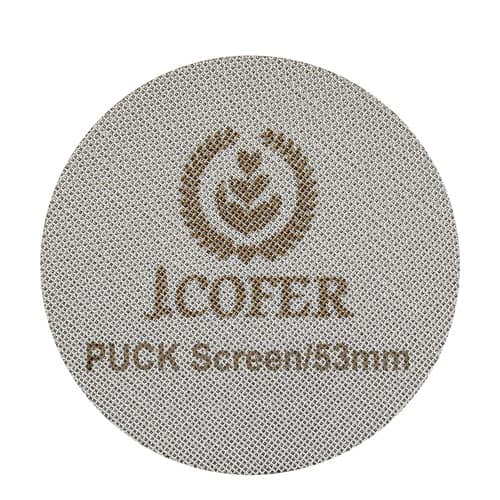
When you say puck screens, mesh filters are the most common choice among espresso enthusiasts. This reusable filter is made from fine metal wires woven together, allowing oils to pass through while still providing adequate filtration.
This can enhance the body and flavor of your espresso but remember to clean them thoroughly after each use to avoid any residual flavors lingering in your brew.
Paper Filters
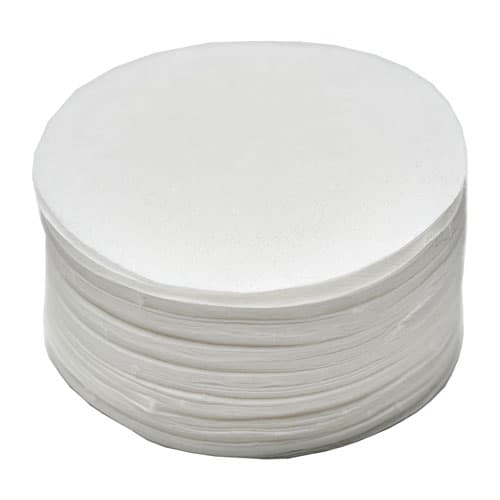
Paper filters or paper screens can be an effective alternative to their metal counterpart. It offers excellent filtration capabilities, ensuring that you have even distribution in your brew. This makes cleaning easy since they’re disposable, but they do pose recurring costs and additional waste.
Stainless Steel Disc Puck Screens
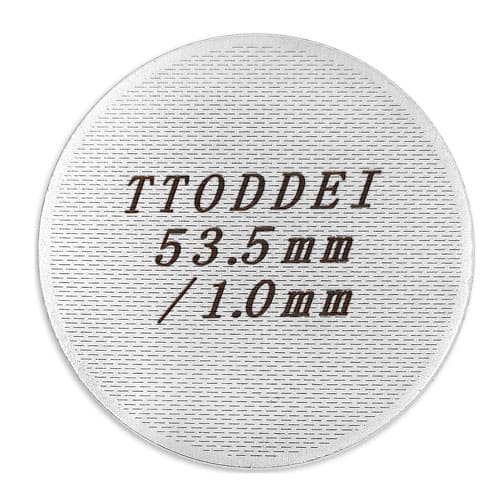
These solid discs with perforations provide consistent water flow during extraction and can have the same effect as the mesh filter, although not as efficient. It may not be as prone to clogging, but when it comes to even distribution, my opinion as a barista is that mesh filters remain the superior choice.
So choosing the right puck screen depends on your needs.
My top recommendation is the mesh metal screen, or if you want to have faster cleanups or less clogging, then the paper filters. Steel disc puck screens are not my favorite, they aren’t as effective as paper or mesh screens.
If you have the opportunity, feel free to experiment with each puck screen. After all, there’s always more than one way to make a delicious espresso shot.
Puck Screen Height
To make things just a bit more complicated if you get a mesh or metal puck screen, you can also choose the height of the screen.
This height value varies from 1 mm to 2 mm.
I think the 1.7 mm ones are best, since they offer something from both ends of the spectrum.
More Ways to Improve Your Espresso Extraction
Of course, you can level up your espresso in more ways than one. Here are other ways you can enhance your extraction without the use of puck screens:
- Use a WDT tool: A WDT or Weiss Distribution Technique tool is a simple but handy device to help even your espresso’s extraction. Its needles are used to stir the coffee grounds, removing any clumps that could ruin your espresso pull.
- Pre-infuse your coffee grounds: Also known as blooming when you’re using other brewing methods, pre-infusion involves wetting the entire coffee puck at around 1-2 bars of pressure, before ramping up to full extraction pressure (9 bars). This readies your coffee grounds for a smoother full extraction.
- Precision coffee basket: You can also use a precision coffee basket which is designed to make the pressure consistent, resulting in an evenly extracted espresso.
Check out my full article on how to improve your espresso to learn more.
Conclusion
Pulling perfect espresso shots consistently could be challenging, especially when you’re just starting out. I’ve been there, and I know it could be frustrating at times when being faced with the same extraction issues repeatedly. You might not see puck screens as a necessity, but trust me when I say that they could really make things easier on your side.
This small circular accessory has helped me achieve consistent results time and time again, plus I really like how it helps reduce the mess whenever I brew.
So I encourage you to give it a try, and please let me know the results in the comments.


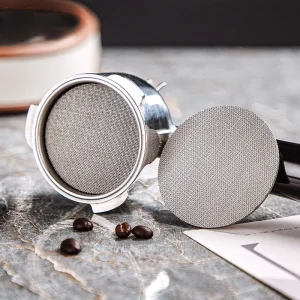

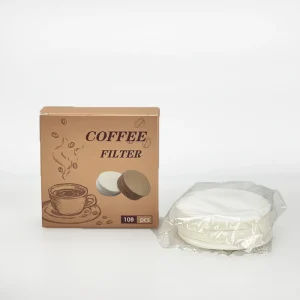
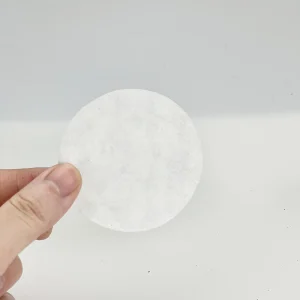
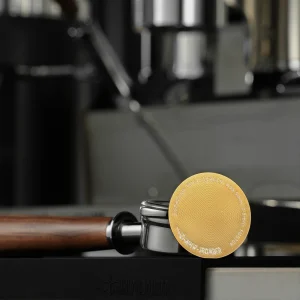
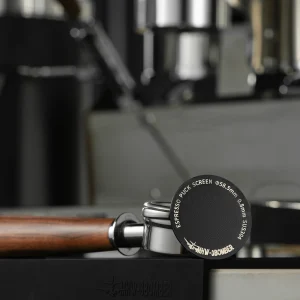
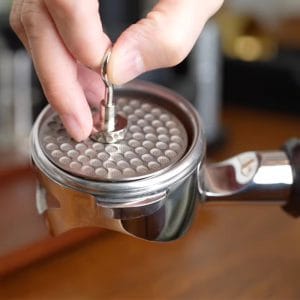
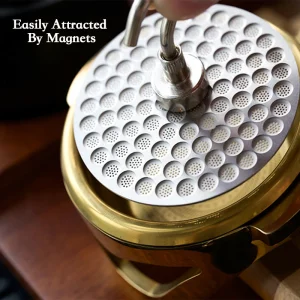



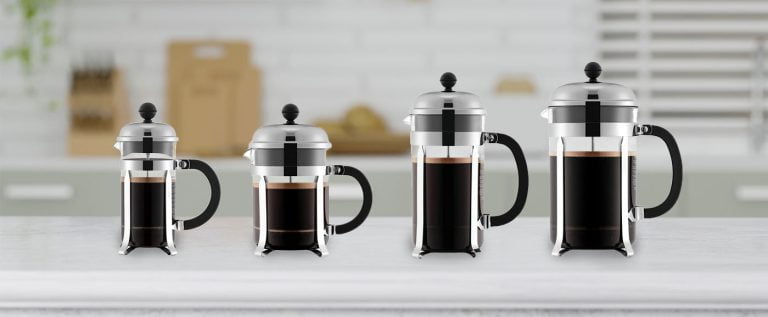
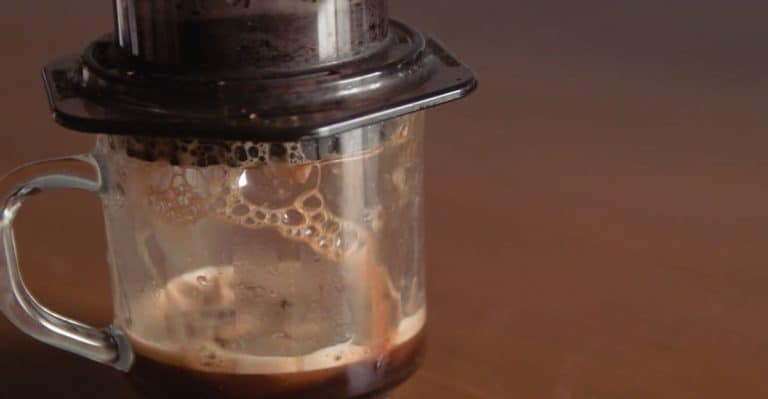

I’ve never thought about using a puck screen before. Seems like a small change with a big impact on brewing. Does this mean I could actually improve my shot consistency without getting a new espresso machine? That’d be awesome.
Definitely. For example, if you ever had problems with chanelling and the coffee squirting out of a naked portafilter, this fixes it. With good puck prep of course.
I’ve been using espresso puck screens for a while now. The improvement in my espresso shots is noticeable, especially when it comes to even extraction. I don’t have to worry as much about channeling, and it does make cleaning the group head a breeze.
Hey Tom, great article. I’ve heard about puck screens but haven’t tried them yet. How often do they need cleaning? Wondering if maintenance is a hassle or if it’s worth it for better espresso shots.
They are not a hassle, but I prefer using paper filters. I’ve actually thrown out several metal filters by accident, I simply forgot that they were in the portafilter and “discarded” them as I knocked the grinds out…